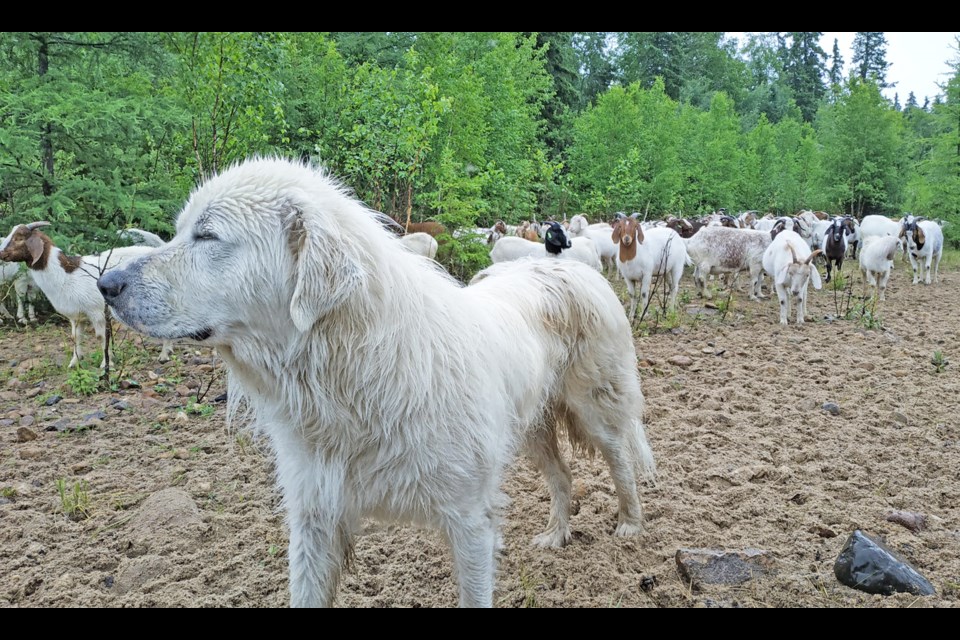LAKELAND - What has 516 feet and is winning the war on weed control?
A herd of 129 hungry goats hired by Alberta Environment and Parks recently finished a week-long shift that saw invasive species of weeds along the shoreline of the Lakeland Provincial Recreation Area's Seibert Lake Campground turned into goat grub.
"It's the third consecutive year of the goat project, and we're definitely seeing the results," said James Morgan, a regional ecologist in the Lakeland for Alberta Parks — and also the goat project manager.
Over the last three years at the Seibert Lake site, located about 100 kilometres northwest of Bonnyville and 100 kilometres east of Lac La Biche, the animals have honed in on the weeds that are causing most of the problems. And because those weeds are along the sensitive shoreline areas, Morgan says the environmental footprint — or hoof-print — of the goats is far better than using herbicides or utilizing hundreds of man-hours to do the same job.
"The goats have developed an appetite for these invasive weed species," said Morgan, admitting that the first year of the project saw the animals on more of a buffet of all vegetation until they were trained to munch on only the oxi-daisies and the bright red or orange-coloured metal hawkweed
How do you make a goat to eat a specific weed? Training and patience, says Morgan — using the expertise of Mallaig-based Penner Goats and Custom Grazing, the local business hired by the province to provide the all-natural weed-eaters. The company uses a specially trained dog — "a guard dog? Sheep dog? Goat Dog," said Morgan with a laugh — to keep the gulping goats on track. The goats are also kept in a fenced area in the target area. At the Seibert Lake project, the goats munched through roughly 17 acres in two, three-day shifts of feeding.
"The goats love it. There seems to be no negative effects on the goats at all," said Morgan, explaining that a registered veterinarian oversees the health of the animals during the project.
The vet isn't the only set of eyes taking in the unique weeding process.
"It does make for quite an attraction for campers and people who come to see," said Morgan, adding that parks staff can use the goats as an education and awareness campaign. "We've had some really good discussions with people about what we are doing. There are some really positive reactions that we are not out there spraying chemicals."
When asked about the end result of the project — which is expected to continue at Seibert Lake next year, and may be expanded to other areas — Morgan first addressed the 'rear' end results of the project.
"The goats' waste is cleaned up — and even the seeds from the weeds that are in that waste have their viability reduced by at least 75 per cent," said Morgan, echoing many examples of goat and sheep research that shows the digestive process can reduce the viability of some passed seeds by as much as 99.95 per cent.
With the weeds removed, the chance for re-growth from seeds minimized, the use of herbicides reduced — and full bellies of the animals, the project is a win-win in the war on weeds.
Seeing the hoof-prints of 129 eager weed-eaters along the new clean park area, Morgan hopes to see the project expanded to other sensitive areas, targeting other invasive species of vegetation.
"I think it's definitely a step in the right direction," he said.



